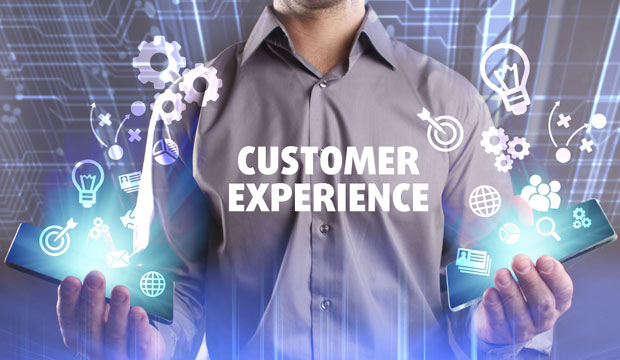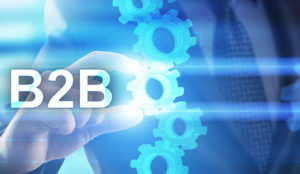MaritzCX on Tuesday unveiled preconfigured business-to-business customer experience templates that monitor key financial indicators; metrics for customer touchpoints, including Net Promoter Score and Overall Satisfaction; business-specific outcomes; and overall account performance.
The dashboards are integrated into the MaritzCX Technology Platform.
“The dashboards become a hub that aggregates all of the data being monitored,” said Jennifer Rubin, MaritzCX associate practice leader.
They give businesses “a centralized, holistic view of their information to make more informed decisions,” she told CRM Buyer.
Among the factors monitored:
- Net Promoter Score and trends in NPS over time;
- Response time to follow up requests;
- Text analytics, to surface issues that have to be addressed;
- Performance across accounts and account managers;
- Revenue at risk by account size; and
- Performance by industry or product and service offering.
The dashboards address a number of pain points: multi-tier distribution models, OEM and branded products, incomplete customer information, and the volume of disparate data. The templates help users better visualize account needs and opportunities, focus retention strategies, and profile NPS.
“As more and more companies move to account-based selling, understanding the overall health of accounts is important,” noted Rebecca Wettemann, VP of research at Nucleus Research.
“This includes top-down measurements like NPS and also bottom-up views of account activity, and the strength of individual relationships with influencers,” she told CRM Buyer.
Action Planning Built In
A team of customer experience designers and consultants will help configure dashboard templates to a company’s specific needs.
Companies also can use CXEvolution with the dashboards. CXEvolution is MaritzCX’s proprietary customer experience assessment model for designing CX roadmaps and building customer experience programs.
CXEvolution is the world’s largest study of CX practitioners, with more than 10,000 CX participants from 1,000 companies spanning 40 industries, MaritzCX’s Rubin said.
It measures performance in terms of CX strategy, people, processes, technology, customer alignment, existing customer growth and other financial indicators.
Companies are placed within one of four CX success stages — emerging, attentive, responsive or proactive — to provide a benchmark and pathway for realistic areas for improvement, Rubin said.
CXEvolution identifies and quantifies “individual roadblocks to success; benchmarks a CX program against other companies in [the user’s] industry; and provides prescriptive-action scenarios correlated to predictive financial returns,” she added.
Preconfigured B2B dashboards show company-specific information, Rubin said. Linking them with CXEvolution lets enterprises use the information from the study to see how their CX programs compare with others. They also can see a typical return on various CX initiatives other companies have implemented to help them determine where to invest their resources to get a similar type of return.
Each dashboard has action planning built in, so account managers can be held responsible for their customers’ experiences, and at-risk accounts can be monitored at all times.
“Understanding and presenting a view of this data is just the first step,” said Nucleus Research’s Wettemann. “Leadership will go to those who apply advanced analytics and AI to not just present the data, but use it to recommend best actions based on the data in context of the overall relationship.”
However, the dashboards “look like a play [by MaritzCX] to sell their research as a service through ongoing CX measurement,” Wettemann observed.
“I see MaritzCX more closely competing with the customer satisfaction research firms like Qualtrix,” she added.
“Most of the big CRM vendors have partnerships or organic capabilities to help large enterprises understand account health and customer satisfaction,” Wettemann said.”I don’t see anything particularly special here.”
The Need for B2B CX
More than 60 percent of B2B organizations consider CX impact and data in their operational decisions, according to data from a panel presentation at 2018 CXEvolution.
However, much needs to be done in the area of B2B CX, which is “an industrial wasteland,” according to Bertrand Duperrin, head of employee and client experience at Emakina France.
The B2B client “is a B2C client that walks through the office door,” he said, adding that enterprise consumerization means B2B clients have the same expectations as consumers. That means going digital isn’t about thinking marketing, but thinking value and services.
Meanwhile, the B2B buyer-seller gap has been growing, and purchasers increasingly have been relegating salespeople to specific parts of the process.
More than 70 percent of 500 B2B companies worldwide surveyed prefer to wait to engage a seller until the seller has a clear understanding of their needs, according to CSO Insights, the research division of Miller Heiman Group. Nearly 58 percent of buyers saw little difference among sellers, and only 23 percent consider vendor salespeople a preferred problem-solving resource.
“The intent of the dashboards goes beyond sales,” Rubin pointed out. “Delivering personalized service and account-level support is a trend that’s as important as the trend to use self-serve purchasing.”
Having access to the consolidated information the dashboards offer “is very helpful to personalizing the type and amount of support an account needs,” she noted. “The dashboards show how the account perceives the relationship with the company, alongside key financial and operational data, so that clients can identify revenue at risk as well as accounts that may be well positioned to expand sales.”
B2B procurement officers opt for self-service over live salespeople for convenience, Avionos has found. Ninety-seven percent of the 160 procurement officers at U.S.-based B2B companies recently surveyed considered a supplier’s online customer portal a critical factor in selection. Eighty-nine percent reported making more purchases online than they had a year earlier.
If an organization delivers a poor experience, “it doesn’t matter how easy it is to buy a product or service in an automated fashion,” Rubin said. That organization “will not likely be among the companies on procurement’s consideration list.”


























































